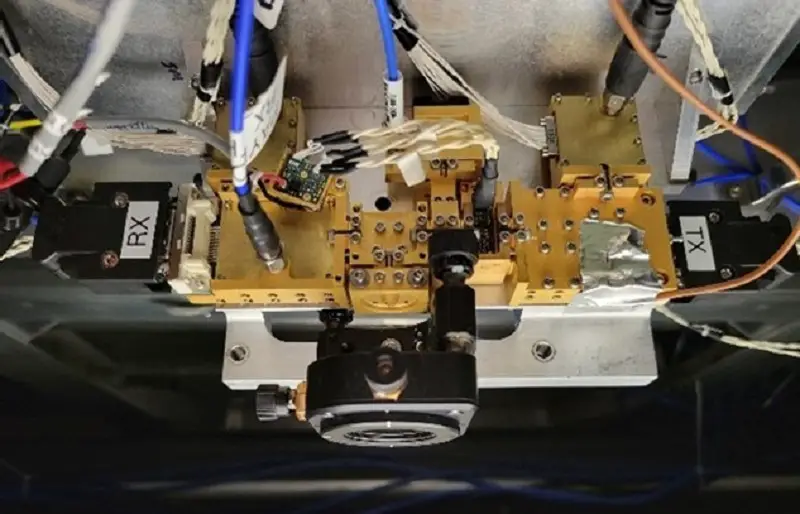U.S. Air Force Research Laboratory, or AFRL, researchers successfully conducted flight experiments Dec. 2- 6, 2022, in Rome, New York to prove the viability of communications at radio frequencies above 300 gigahertz, or GHz, known in research communities as terahertz, or THz, band. Over three days of flight experiments, researchers from AFRL’s Information Directorate, in collaboration with Northrop Grumman and Calspan Flight Research, conducted measurement of propagation loss between two aircraft at Air Force relevant altitudes and ranges. Propagation loss is a measure of the reduction in the frequency intensity as the frequency propagates away from one aircraft to another. It is defined as the difference between the source level and the received frequency level. The flight experiments are a part of AFRL’s Terahertz Communications program which aims to determine the viability of utilizing terahertz band frequencies to service future Department of the Air Force communication needs.
“AFRL has been an early supporter of research and development in sub-THz and THz frequencies and since 2014, we have been enabling innovative communications and networking technologies at this new spectrum frontier. Terahertz frequencies are currently underutilized due to lack of advanced electronic devices but with recent advances in radio frequency, or RF, electronics; however, the past two decades of research and development from DARPA Microelectronics Technology Office have made it possible for experimentation in terahertz band. There were physics-based models but no known terahertz channel propagation data for airborne communications before our experiments,” said Dr. Ngwe Thawdar, AFRL program manager and subject matter expert.

“This experiment is a significant advance in radio frequency technology capabilities. Pushing system frequencies into the submillimeter wave range opens significant new portions of the electromagnetic spectrum to practical applications. With our expertise and long-term investments in advanced microelectronics, we are uniquely qualified to further mature the technology for future mission needs,”?said Dr. William Deal, Northrop Grumman terahertz technologist.
Research institutions in the U.S., Europe and Asia are conducting early channel-sounding work but to date they have been at short ranges on the ground. Almost all RF systems commercial or defense utilize a combination of frequency bands below 100 GHz to create airborne and satellite links for voice, data, and command and control communications, Thawdar said. Since frequencies above 300 GHz remain unregulated, increasing demand for higher data rates in communication systems has led the research community, including AFRL, and wireless industry companies to seek the next available wide bandwidth by exploring new parts of the spectrum. The research was assisted by Northrop Grumman’s Terahertz Electronics program, which aims to produce critical device and integration technologies required for ensuring the development of compact, high-performance electronic circuits capable of operating at various frequencies. The AFRL experiments are the first THz communications flight tests to deliver an important technical milestone toward the Air Force’s electromagnetic spectrum dominance, according to Thawdar.













